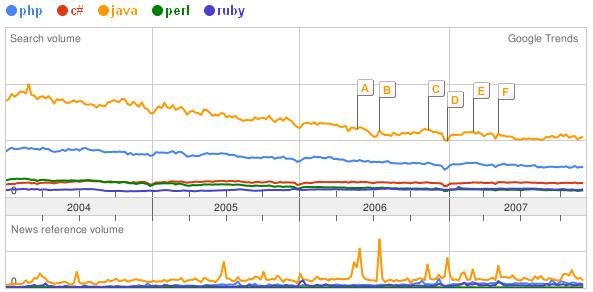 Finally PHP 4 is approaching its end of life. With the upcoming PHP 4.4.8 release, development on PHP 4 will be officially stopped. No more release will be shipped to end user. This is not very fresh news since this has been announced on php.net since July 2007.
Finally PHP 4 is approaching its end of life. With the upcoming PHP 4.4.8 release, development on PHP 4 will be officially stopped. No more release will be shipped to end user. This is not very fresh news since this has been announced on php.net since July 2007.
Conquering Reluctancy To Upgrade
As open source project, PHP has enjoyed its growth through the support of its enthusiasts, name them web hosts and application developers, not to mention the wide use from end-users. Referring to Google Trends, PHP scores the second lagging behind java as the most queried programming languages. This comparison is taken as simple as possible, neglecting the most appropriate functional environment of each language.
Although the trend can’t lead us into final conclusion on the future of PHP, it’s interesting that just like other programming languages, PHP trend is negative. This may lead to additional question whether PHP still keeps or expands its audience or starts losing its grip.




